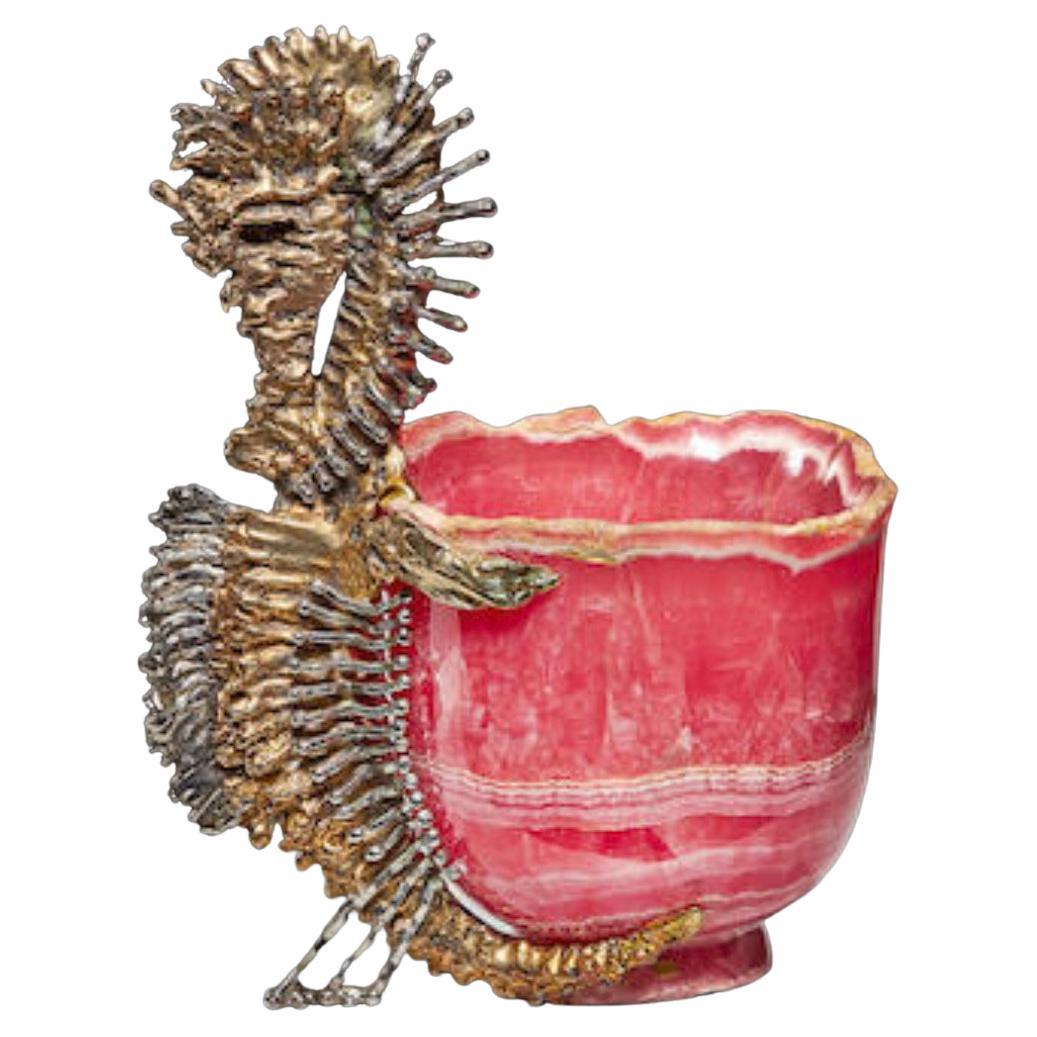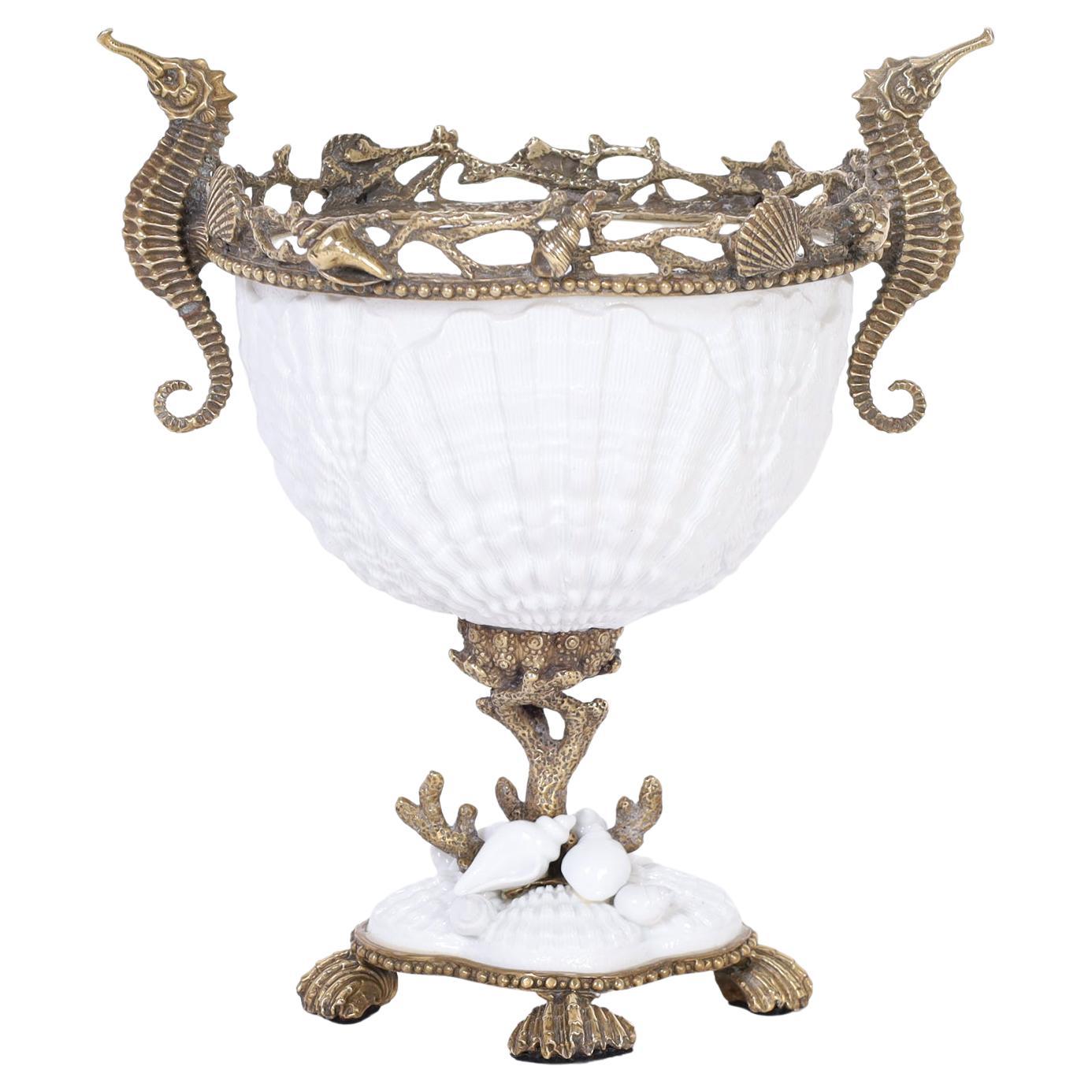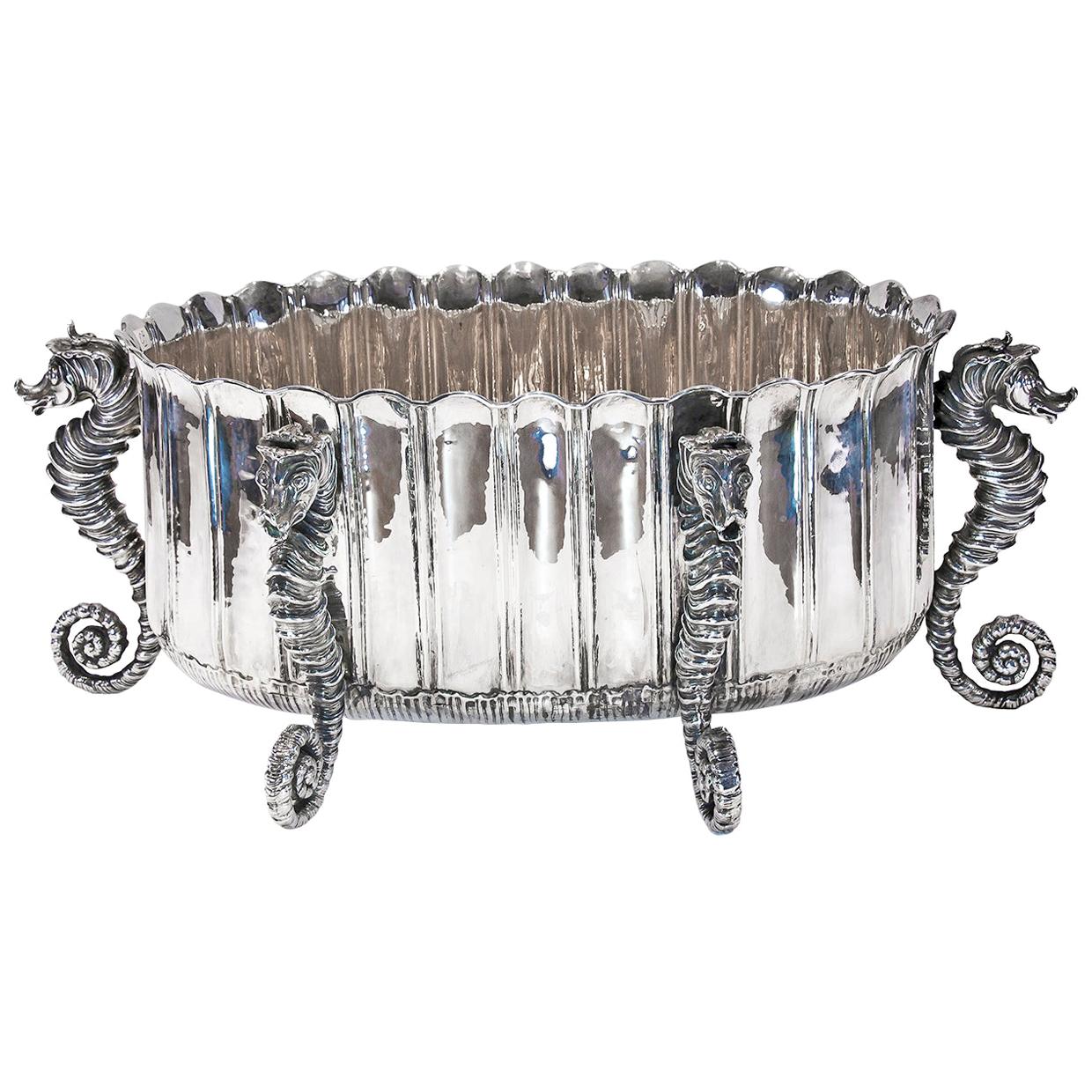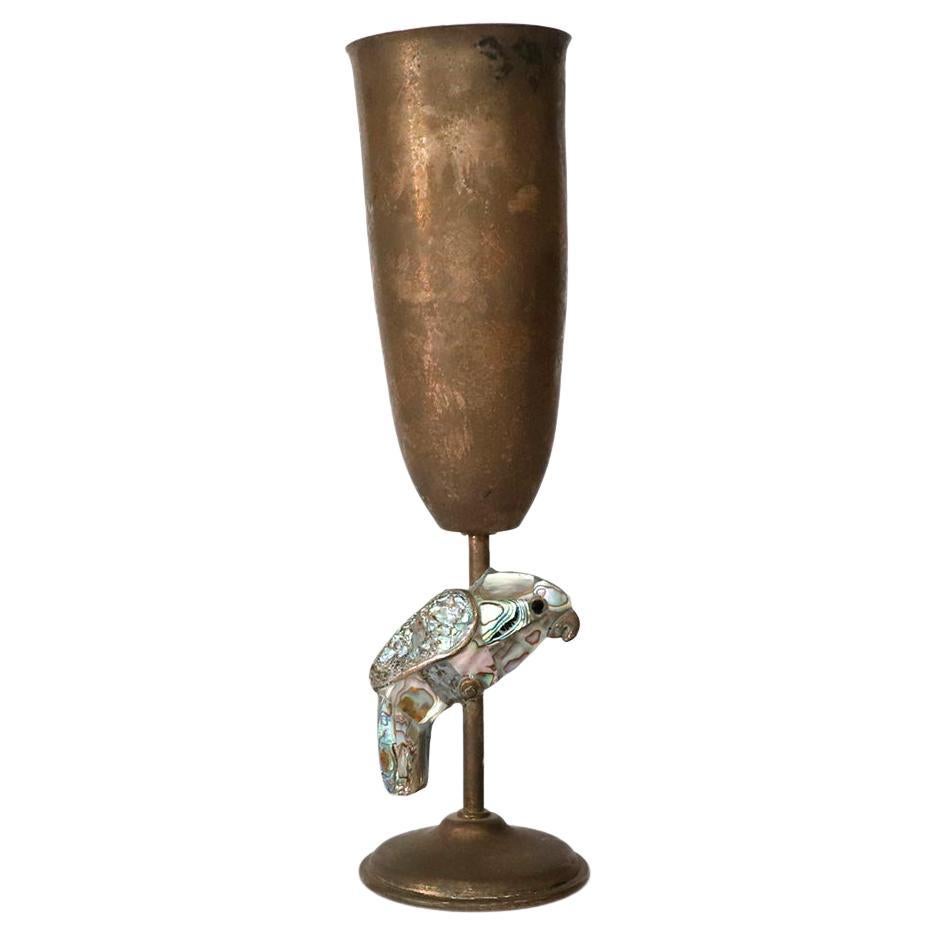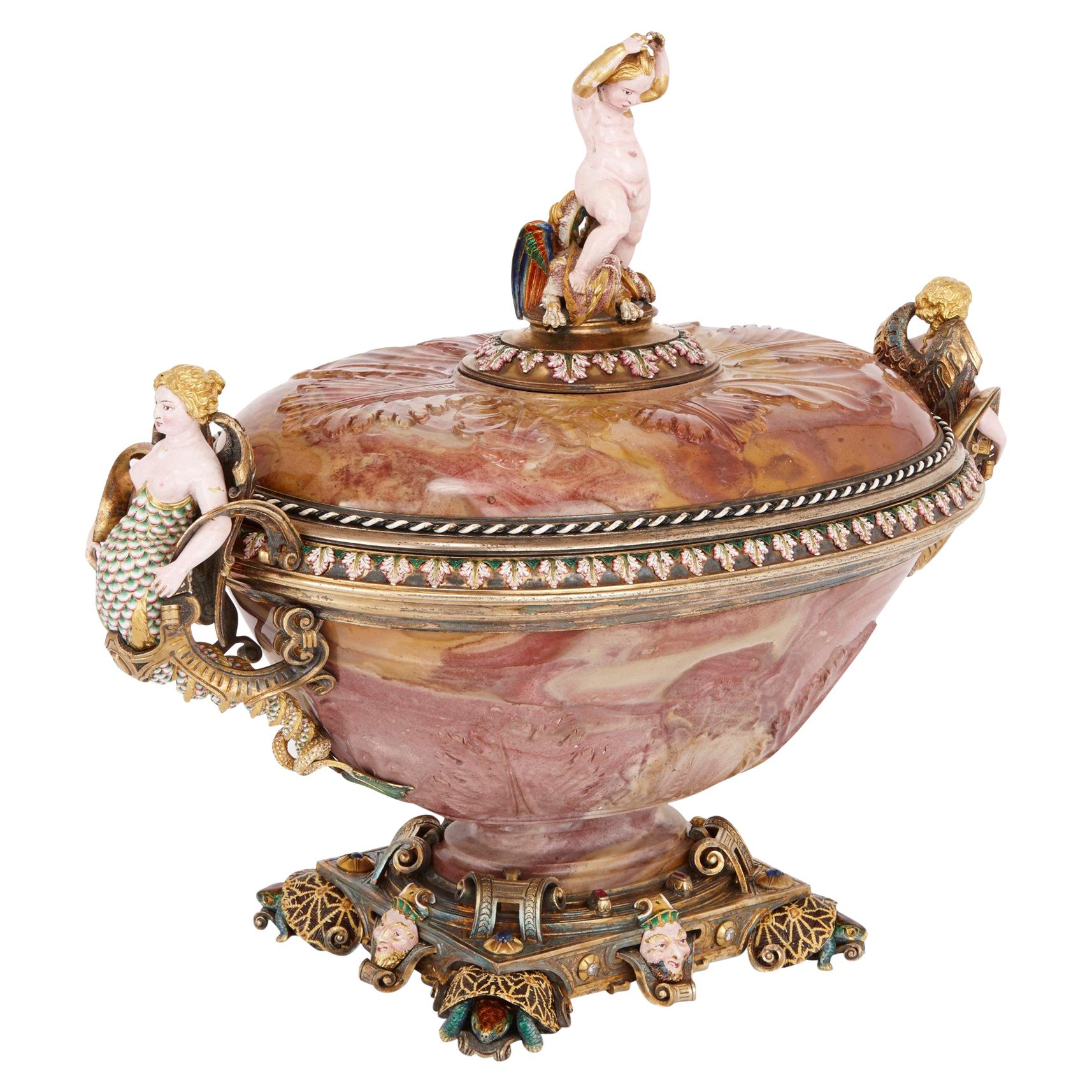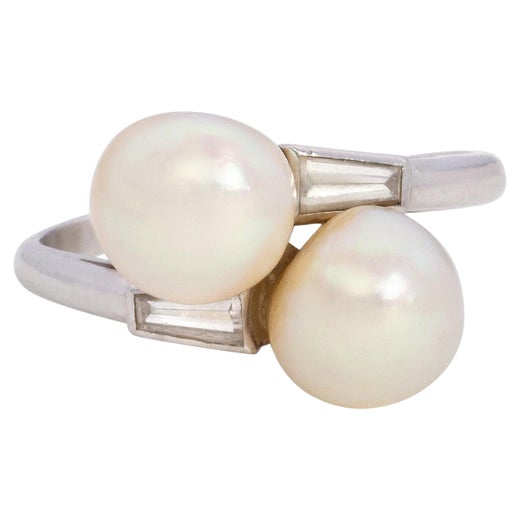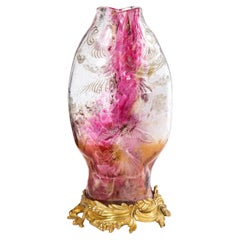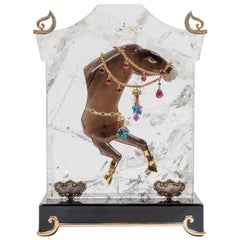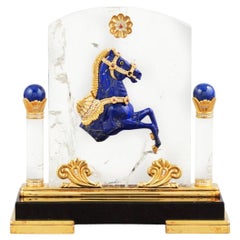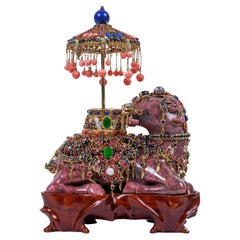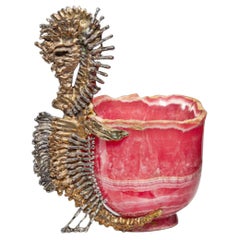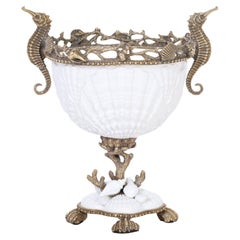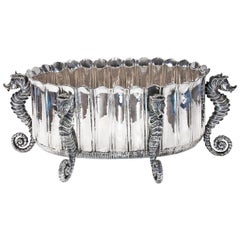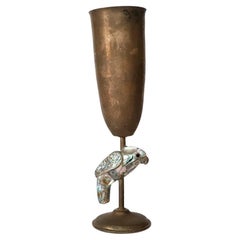Chaumet Paris, a French Silver-Gilt Seahorse Mounted Rhodochrosite Cup
About the Item
- Creator:Chaumet (Jeweler)
- Dimensions:Height: 7 in (17.78 cm)Width: 5.5 in (13.97 cm)Depth: 3 in (7.62 cm)
- Style:Brutalist (In the Style Of)
- Materials and Techniques:
- Place of Origin:
- Period:
- Date of Manufacture:circa 1980
- Condition:
- Seller Location:Queens, NY
- Reference Number:1stDibs: LU1798227936832
Chaumet
Decades before luxury French jewelry maisons such as Van Cleef & Arpels and Cartier were born, Marie-Étienne Nitot (1750–1809) founded the house that became the internationally esteemed Chaumet, which, for centuries, has created timeless necklaces, watches, rings, tiaras and other jewelry and accessories for royalty as well as Hollywood luminaries.
Before opening his own jewelry house, Nitot worked as an apprentice to Ange-Joseph Aubert, court jeweler to Marie Antoinette, and collaborated on pieces for the Queen. In 1780, he left Aubert’s side to open his own maison.
Surviving the upheaval of the French Revolution, Nitot soon found lavish commissions with the new people in power. The Emperor Napoléon Bonaparte longed for France to once again be the epicenter of luxury, making himself the fashionable face of the prospering country. Nitot’s commissions for Napoléon began with the papal tiara for Pope Pius VII that included a 414-carat emerald among its thousands of precious stones and the 1804 coronation sword, a decadent piece that featured the 140-carat Regent diamond.
The young jewelry house soon became the official jeweler of the Imperial Court, the personal jeweler of Empress Joséphine and one of the most sought-after jewelers in Europe. Chaumet’s work in this era helped popularize the tiara as a status symbol, with ornate pieces designed for Joséphine and Empress Marie-Louise, Napoléon’s second wife.
After Nitot died in 1809, his son, François-Regnault, took over in 1812 and moved the maison into the Place Vendôme, making it the first business to occupy the Parisian center of luxury. By then, Chaumet had included timepieces in its offerings, such as bracelet watches adorned with precious gemstones and equipped with movements made by Breguet (which opened a shop on Place Vendôme in 1933).
After the fall of the Napoléon Empire, successors Jean-Baptiste and Jules Fossin focused more on romantic styles of jewelry that referenced the past and nature, an approach carried on by Valentin and Prosper Morel. It was Joseph Chaumet, director from 1885 to 1928, who gave the maison its illustrious name and brought it into the 20th century with jewelry, accessories and tiaras inspired by the extravagant decor of the Belle Époque.
Later, with Joseph’s son, Marcel Chaumet, succeeding him, the house would be featured at the Exposition Internationale des Arts Décoratifs et Industriels Modernes in Paris — from which the term Art Deco derives — and, alongside the likes of Cartier, would be seen as a leader in introducing the flamboyantly geometric designs and high-contrast color pairings of Art Deco jewelry to the global stage.
Chaumet has adapted over the years to meet changing tastes and trends. The house still reigns in the world of luxury jewelry, celebrating its 240th anniversary in 2020. Since 1999, it has been part of the LVMH Group. Its salons and high jewelry workshop continue to operate in the Place Vendôme where gem-setters, polishers and jewelers craft rings, earrings, watches and enduringly popular tiaras.
Find an exquisite range of authentic vintage Chaumet jewelry on 1stDibs.
- ShippingRetrieving quote...Shipping from: Queens, NY
- Return Policy
More From This Seller
View AllAntique 19th Century French Japonisme Vases
Enamel, Ormolu
20th Century French Mounted Objects
Rock Crystal, Jade, Quartz, Gold, Silver
20th Century French Mounted Objects
Lapis Lazuli, Rock Crystal, Gold, Silver
20th Century Italian Mounted Objects
Gold
Antique 19th Century French Napoleon III Barware
Crystal, Ormolu, Bronze
Antique 19th Century Austrian Greek Revival Urns
Ormolu
You May Also Like
20th Century French Figurines and Sculptures
Rhodocrosite, Silver
20th Century Italian Neoclassical Decorative Bowls
Brass
Vintage 1960s Italian Sterling Silver
Silver
Vintage 1960s Mexican Mid-Century Modern Abstract Sculptures
Abalone
Antique Early 19th Century French Renaissance Vases
Agate, Gold, Enamel, Silver
1990s French Mid-Century Modern Decorative Bowls
Crystal, Bronze
